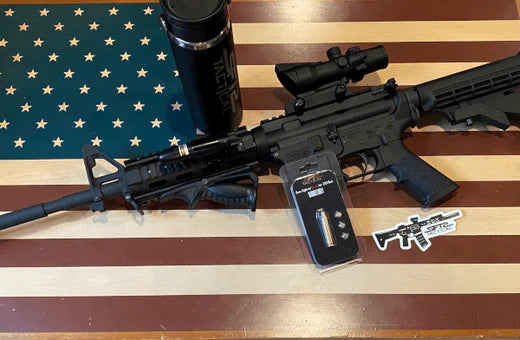Great article that can give us all tips on making sure we are responsible gun carriers, and that we are always prepared!
Full article below. Original www.dailycaller.com
-------------------------------------------------------------------------------------
By some estimates there are over 11 million people who have concealed carry permits in the US. That is several times larger than the entire US military and it does not include people who live in “Constitutional Carry” states where a permit is not required. But notice I am counting people who have permits, not people who carry on a daily basis. That number I suspect is significantly smaller; likely less than half.
There are a lot of reasons why someone who went to the trouble of getting a concealed carry permit doesn’t carry all the time. Some people live in states where they can’t get a permit or carry but have an out of state permit for when they travel. Some people get them so that there is no chance of running afoul of any laws when they transport firearms to the range or when they travel. Some people live where they can carry but work where they can’t either because it is in a different state or their employer won’t allow it. Others are only interested in carrying when they feel endangered (which begs the questions of why are you venturing into dangerous places). I have seen all of these examples from my students when I was teaching basic firearms classes.
Regardless if you carry every day (which you should even at home), or carry only occasionally, here are some tips to make sure you are prepared.
1. Comfort is King. If I was expecting trouble I would carry an AR, or better yet not leave the house. Since I don’t expect trouble but want to be prepared nonetheless my priorities are a bit different and in this regard comfort is at or near the top. If a gun is too big or too heavy or if your holster is rubbing your delicates the wrong way it is much more likely to get left at home or in the car. An uncomfortable holster also results in a lot of fidgeting and readjustment which can compromise the whole concealed part. Find the gun and holster combination that works best for you, you manner of dress and your body type.
2. Keep it clean. I will admit that I am guilty of ignoring my concealed carry gun. This is a mistake. Even if you never use it or draw it from its holster that gun is going to attract dust and debris like a lint trap. If you are an oil hog that likes to keep your gun slathered in lubricants that only makes thing worse. At least monthly inspect, function check and clean your concealed carry gun (unload it first in a safe direction). Pay special attention to the magazine as this collects a lot of lint and can interfere with the function of your gun.
3. Rotate your ammo. You went to all the trouble and expense of buying high quality self-defense ammunition; you want to make sure it goes bang when you need it. If you carry on your person or in your car on a regular basis that ammunition is exposed to heat and cold, humidity and moisture. Factory ammunition is sealed to protect it from the elements but it is not impervious. At least once per year shoot up your old carry ammunition and reload with new ammo. This will both offer you a training opportunity (you should at least occasionally train with the ammo you carry) and help prevent any misfires.
4. Practice is more important than caliber. Any gun is better than no gun and any caliber is better than no caliber but too many people make a big deal about having a powerful enough round. Any good quality self-defense round in the .380 ACP and .38 Special range and above is good enough. It is far more important that you feel comfortable with your ammo/gun combination and can use it effectively. Hitting your target with a .38 Special is a lot more effective than missing it with a 10mm.
5. Carry spare ammo. For a long time I did not see the need to carry spare ammunition. I figured that if I get in a situation where I needed more than 5 or 6 shots a spare magazine isn’t going to save me. I was wrong. A defective magazine will put you out of commission fast as will an accidentally engaged magazine release. You want to have a spare mag where you can get to it easily. Same thing with a revolver. Malfunctions do happen and you need to be able to clear them and reload fast. For revolvers I prefer speed strips since they lay flat and offer faster reloads that loose rounds. Make sure to keep your spare ammo in a dedicated pocket or its own pouch.
Article by Jorge Amselle







